Who doesn’t love the vibrant emerald tapestry of a well-tended St. Augustine grass lawn?
With its broad, flat blades, this warm-season grass is a Southern favorite thanks to its ability to thrive in hot climates.
But, just as every rose has its thorn, every lawn has its weeds. And if you’ve encountered the likes of stubborn crabgrass, dollarweed, or nutsedge, you know they can be a real buzzkill.
But fear not! You’re here for a reason, aren’t you? You’re looking for a battle plan to show those pesky weeds who’s boss.
Buckle up because it’s time to strategize and learn how to kill weeds in St. Augustine grass.
Killing Weeds In Your Lawn
With its lush, carpet-like allure, St. Augustine grass is a homeowner’s dream. But with this dream comes a challenge: weed infestation.
Battling weeds, particularly in shady areas, can feel like a full-time job. It’s like a never-ending game of whack-a-mole—each time you pull one weed, another one springs up in its place.
So, why is weed control in St. Augustine grass so challenging?
Despite its robust growth, St. Augustine grass is quite sensitive. Many herbicides that can knock out weeds may also harm your lawn (1). Moreover, grassy weeds like crabgrass, dallisgrass, and bermudagrass can blend in with St. Augustine grass, making them hard to spot. By the time you do, they’ve thrown down the gauntlet.
Then there are the stubborn weeds like nutsedge and bermudagrass that refuse to bow out gracefully. They’re the comeback kids of the weed world, often requiring a mix of herbicides or non-chemical methods and a generous dose of patience to kick them to the curb.
Manual Weed Removal: A Non-Chemical Solution
Before you despair, let’s talk about manual weed removal. It’s an old-school, non-chemical method involving getting down and dirty, literally, by physically pulling or digging out the weeds. This method is most effective for small infestations or herbicide-resistant weeds, but be warned, it might feel like a workout.
To make this task more manageable, start by identifying the type of weed you’re dealing with. Knowledge is power, especially when it comes to recognizing root systems. Some weeds have shallow roots that pull out easily, while others with deep or spreading roots might require more work and care.
Next, equip yourself with the right tools. A knife, hoe, shovel, or weed puller can be your best ally in this battle. These tools will help you pull or dig out the root without disturbing the surrounding grass.
Timing is crucial. The best time to remove weeds is when the soil is moist and the weeds are young and tender—think of it like picking fruit. When it’s ripe, it comes off the branch easily. Similarly, young weeds with a moist soil base will be easier to pull out, reducing the risk of the roots breaking off and staying in the soil.
Finally, when pulling out the weed, grasp it by the stem and use a gentle yet firm motion. The goal is to remove as much of the root as possible. Any pieces of root that are left behind can often regrow into a new plant.
Perennial weeds with deep root systems can be hard to pull by hand and may require careful digging. Sometimes it’s almost impossible to completely remove the root system of weeds such as nutsedge or bindweed, and a chemical herbicide may be the only realistic choice.
The Battle Against Weeds: Post-Emergent Herbicide Tactics
Post-emergent herbicides, applied after weeds have sprung up and are visible, work by either stunting growth or disrupting the metabolism of the weeds, causing them to keel over.
But here’s the kicker: not all post-emergent herbicides play nice with St. Augustine grass. Some may even harm or kill your precious lawn. So, how do you choose the right one?
Choosing the Right Post-Emergent Herbicide for Your Lawn
Here’s a pro tip: when selecting a post-emergent herbicide, make sure it’s labeled as safe for St. Augustine grass and targets the weed species you commonly find freeloading off your lawn.
Some of the MVPs in the chemical herbicide league include atrazine and imazaquin. Atrazine, a broad-spectrum herbicide, provides pre-emergent and post-emergent control of many weeds. But beware, it can harm trees, shrubs, and flowers if applied over their root zone.
On the other hand, imazaquin, a selective herbicide, is a nutsedge assassin and is safe for most southern lawn grasses when used correctly.
You can also get products that combine weed killer with fertilizer for your St. Augustine grass lawn.
Remember, you should use these herbicides as directed on the label. Proper timing and application methods are the key to achieving your weed-free dream lawn.
Killing Bermuda Grass in St. Augustine Lawn
Now, let’s shift gears and talk about a common lawn predicament: Bermuda grass invasion in your St. Augustine lawn. Warm-season cousins they may be, but these two have different growth habits and requirements, and they’re not too fond of each other.
Bermuda grass is like that overbearing relative who loves to take center stage. It’s more invasive and resilient than St. Augustine grass, and it can quickly take control if your St. Augustine grass is weakened or stressed.
Here’s the tricky part: there’s no selective herbicide that can kill Bermuda grass without also taking out St. Augustine grass. So what’s a gardener to do?
Well, the only option is to use a non-selective herbicide and then re-sod or re-seed the area with St. Augustine grass. I won’t sugarcoat it; this method is expensive, time-consuming, and comes with no guarantees. Bermuda grass is a stubborn invader that can re-establish itself from nearby sources or dormant seeds.
In the end, maintaining a healthy, weed-free St. Augustine lawn is a bit like a chess game. It’s all about strategy, patience, and sometimes, trial and error. But with the right game plan, you can reclaim your garden party from those pesky weeds.
Weed Prevention
Weeds in your St. Augustine grass can be as persistent as that one neighbor who never seems to run out of questions whenever you bump into them.
But just like you’ve learned to handle your chatty neighbor, you can also master the art of controlling weeds in your lawn.
Prevention, my friends, is your first line of defense. Let’s delve into the nitty-gritty of keeping your St. Augustine grass weed-free.
Lawn Maintenance: The Unsung Hero of Weed Prevention
Have you ever noticed how a well-maintained lawn seems to have fewer weeds? That’s no coincidence. When it comes to weed prevention in St. Augustine grass, lawn maintenance is like that reliable friend who always has your back.
The trifecta of lawn maintenance includes mowing, irrigation, and fertilization. It’s like a three-legged stool — if one leg goes wonky, the whole thing topples over.
Mowing: The Goldilocks Principle
Mowing your lawn is like the Goldilocks of weed prevention. You can’t cut it too short or let it grow too long; it has to be just right. For St. Augustine grass, the sweet spot is between 2.5 to 4 inches (2).
If you cut it too short, you open up a VIP pass for weed seeds to the soil. On the flip side, you’re risking poor air circulation and potentially inviting diseases if you let it grow too long. And remember, a dull blade rips the grass rather than cuts it. So, keep those mower blades sharp!
Irrigation: Walk the Tightrope
Keeping your St. Augustine grass hydrated without turning your yard into a swamp is like walking a tightrope. The secret? Water deeply and infrequently. Around 1 inch of water per week, including rainfall, should keep the grass happy (3).
Remember to water early in the morning to minimize evaporation and reduce the risk of diseases. Evening watering sessions might sound romantic, but they’re a recipe for fungal heartbreak.
Fertilization: Feed, But Don’t Overfeed
Just like your favorite dessert, fertilizers are great in moderation but can cause trouble when overindulged. A balanced fertilizer with a ratio of 3:1:2 or 4:1:2 of nitrogen, phosphorus, and potassium is what you should aim for.
Resist the urge to fertilize during winter dormancy and opt for a slow-release fertilizer to prevent nutrient leaching and runoff. Remember, the goal is a stronger, thicker turf that can outcompete weeds.
Pre Emergent Herbicide: Your Secret Weapon
If lawn maintenance is your reliable friend, then pre-emergent herbicides are your secret weapon. Think of them as the superheroes of your garden, swooping in to prevent weed seeds from growing.
Timing is everything when it comes to these herbicides. Apply them before the growing season of the weeds, typically in early spring or late fall. And remember, they’re most effective when used with other weed control methods.
Atrazine, prodiamine, and isoxaben are some of the best pre-emergent herbicides for St. Augustine grass. But like any potent tool, use them with caution. Always follow the label instructions and ensure proper application for the best results.
In the end, the key to weed-free St. Augustine grass is a blend of proper lawn maintenance and strategic use of pre-emergent herbicides. It may sound like a lot, but trust me, once you get the hang of it, you’ll be showing those weeds who’s boss in no time!
Common Weeds In St. Augustine Grass
Let’s break down the usual suspects that are probably wreaking havoc on your picturesque turf.
Meet the Culprits: Broadleaf Weeds
Broadleaf weeds are the show-offs of the weed world. With their wider, diverse leaf shapes and eye-catching flowers, they’re easy to spot. Let’s get to know some of them a bit better.
Chickweed
Chickweed is the sneaky low-grower of the bunch. It sports small white flowers and oval leaves, which grow alongside a hairy stem. As an annual weed, it germinates in the fall and then grows throughout winter and spring.
Dollarweed
Next up, we have the Dollarweed. This weed loves to make its home in wet and poorly drained soils. You’ll recognize it by its round, glossy leaves that look like a shiny silver dollar. This perennial weed spreads through seeds, rhizomes, and stolons, so it’s one to watch out for.
Henbit
Henbit is another annual weed, identifiable by its square stems, opposite leaves, and purple flowers. Like Chickweed, it germinates in the fall and grows during winter and spring.
Clover
Clover is the resourceful one. It can fix nitrogen from the air, allowing it to thrive in low-fertility soils. Its trifoliate leaves and white or pink flowers are a giveaway. This perennial weed spreads via seeds and stolons.
Now, Let’s Talk Grassy Weeds
Grassy weeds are a bit more subtle with their narrow, linear leaves. Their flowers tend to be inconspicuous, making them harder to spot. Let’s dive into some of the most common ones.
Annual Bluegrass
Annual Bluegrass is an annual weed with light green leaves and boat-shaped tips. This weed is a real survivor, producing many seeds that can live for years in the soil. It germinates in fall and grows in winter and spring.
Crabgrass
Crabgrass is another annual weed recognized by its coarse, hairy leaves that form a rosette. It’s a prolific seeder, with seeds that can germinate throughout the growing season. It grows in summer and dies off in fall.
Dallisgrass
Now, meet Dallisgrass. This perennial weed has coarse, stiff leaves that grow in clumps. It’s often plagued by a fungus that covers its tall seed heads with black spores.
Bermudagrass
Lastly, there’s Bermudagrass. This perennial weed is aggressive and resilient, characterized by its fine, wiry leaves that form a dense mat. It spreads by seeds, stolons, and rhizomes, growing in summer and going dormant in winter.
References:
- St. Augustine Grass For Florida Lawns – https://edis.ifas.ufl.edu/publication/LH010
- St. Augustinegrass Yearly Maintenance Program – https://hgic.clemson.edu/factsheet/st-augustinegrass-maintenance-calendar/
- St. Augustinegrass Lawn Maintenance Calendar – https://content.ces.ncsu.edu/st-augustinegrass-lawn-maintenance-calendar
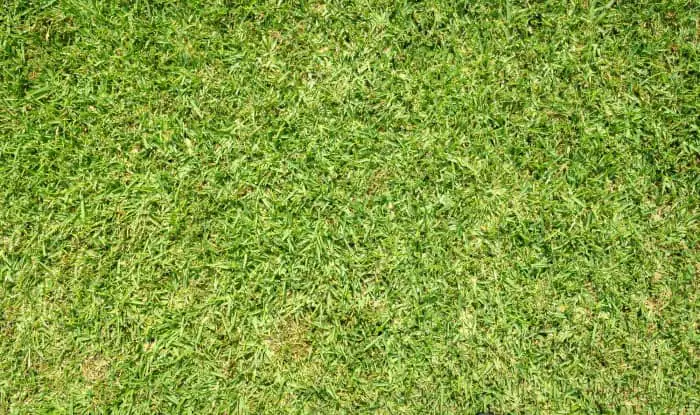
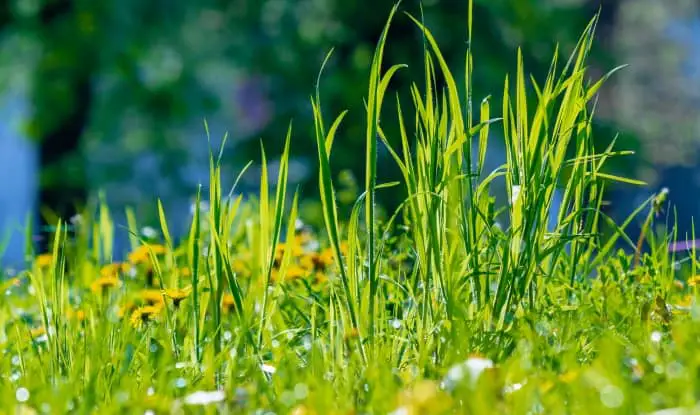
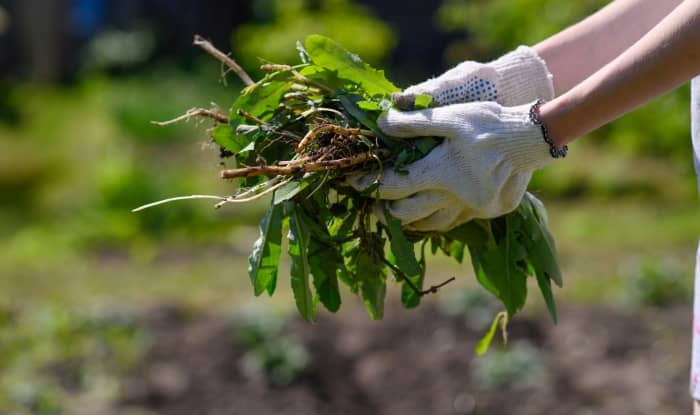
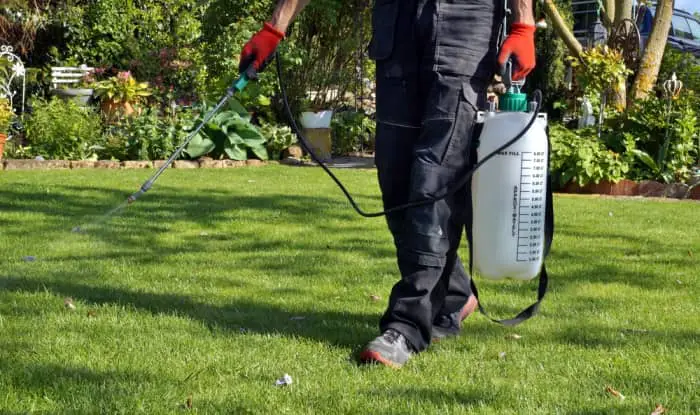
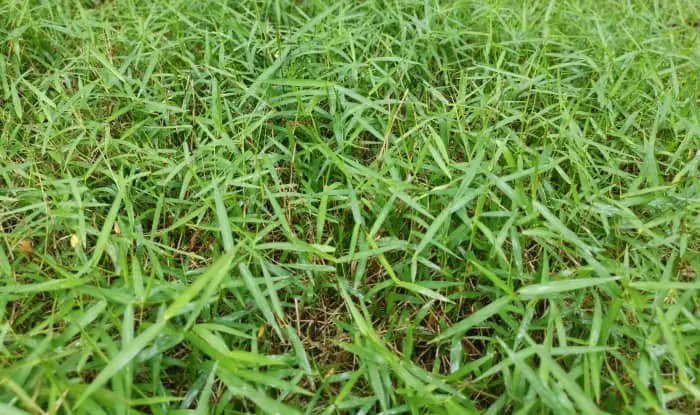
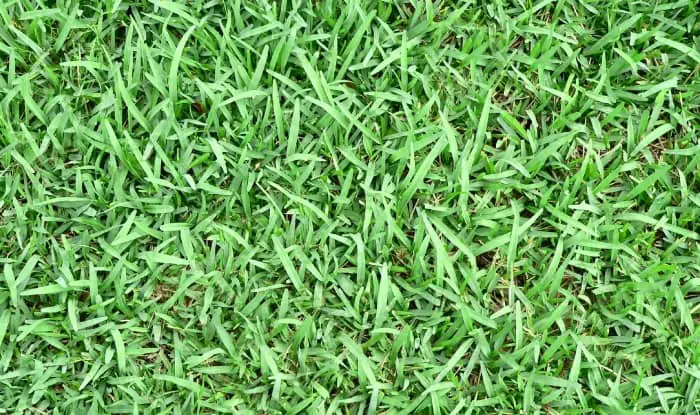

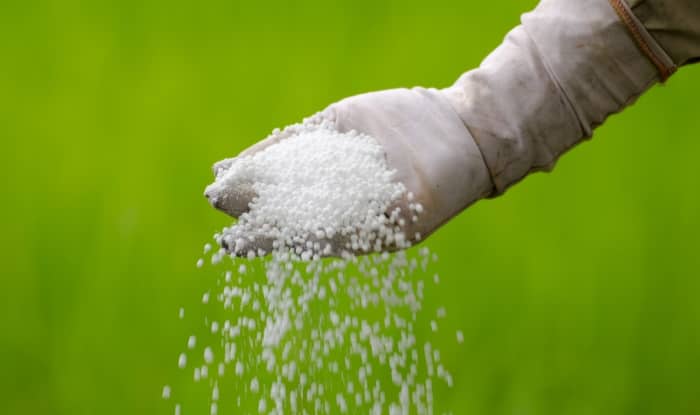
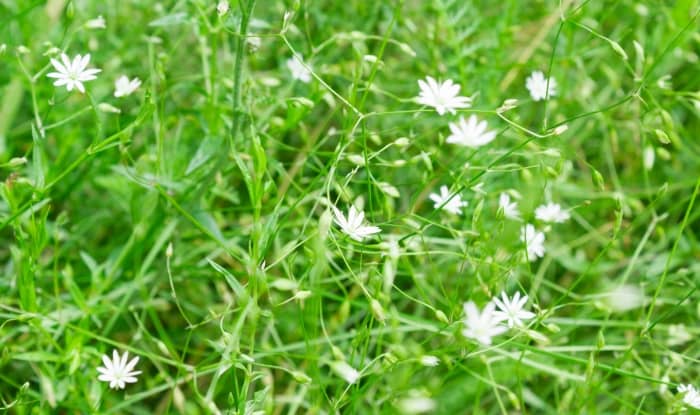
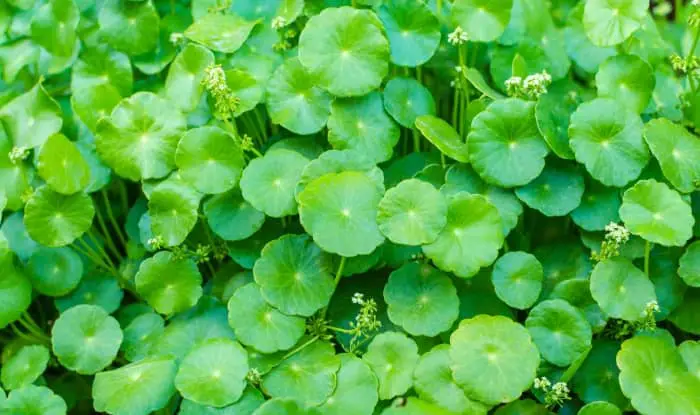

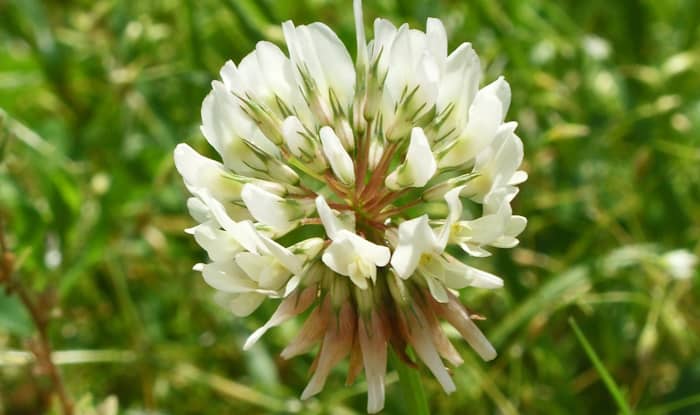
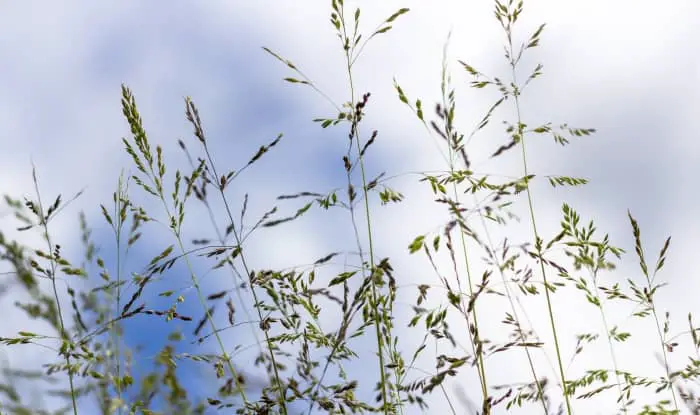
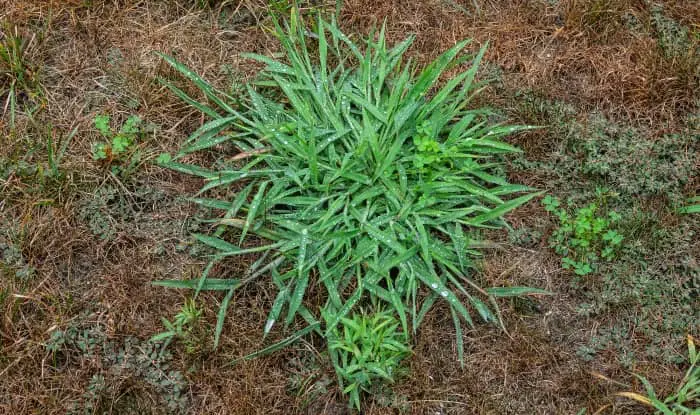
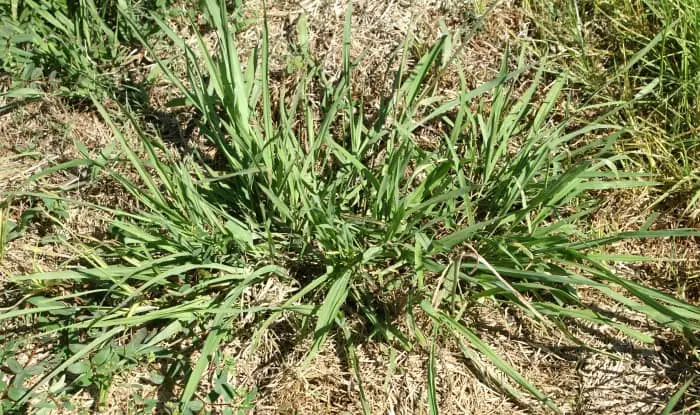
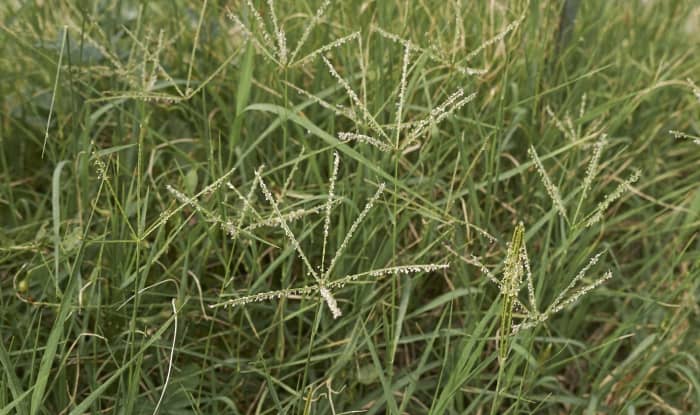
Why is there no mention of Torpedo Grass?
Can it be controlled by any method that does not kill the St Augustine grass?